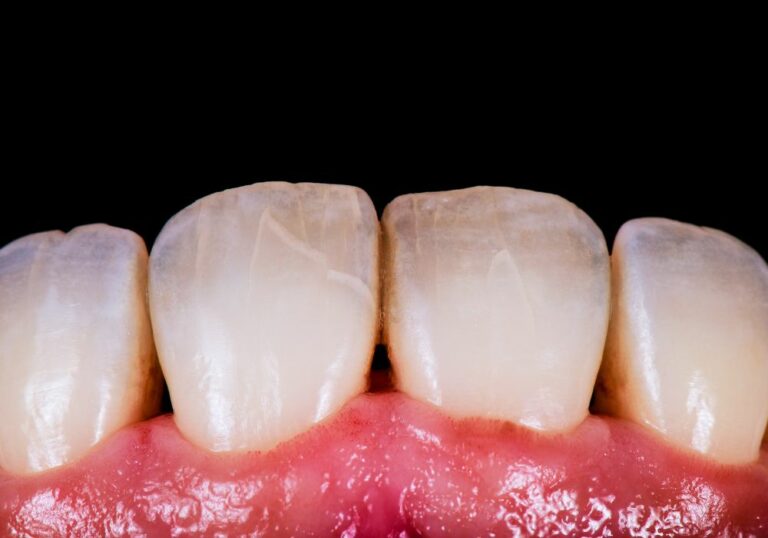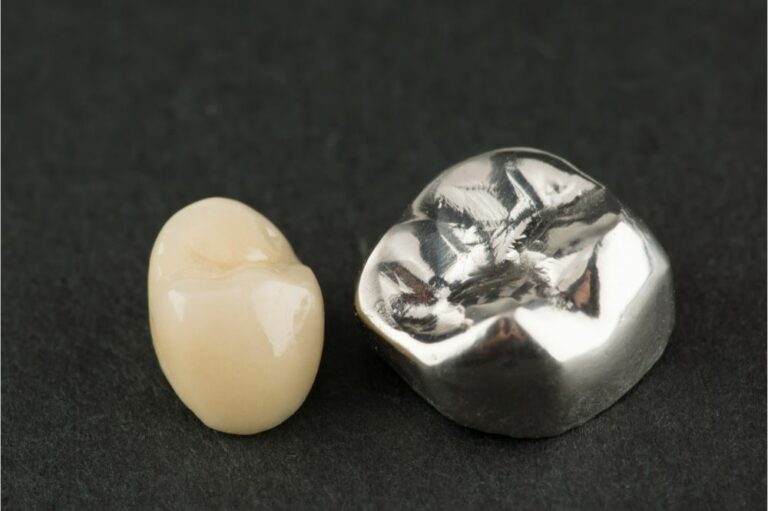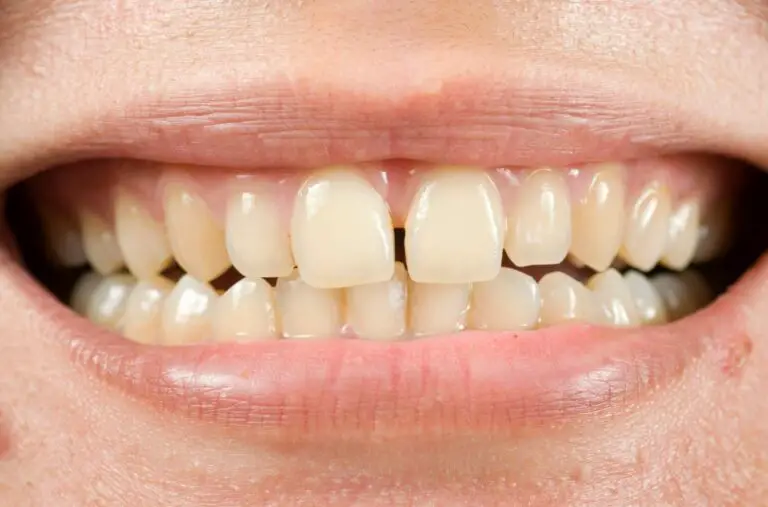Gum detachment, also known as gum recession, refers to the condition when the gums pull away from the teeth and expose the root surfaces. Mild gum recession may not cause any problems, but severe gum detachment can lead to tooth decay, bone loss, and eventual tooth loss if left untreated. This detailed article explores the causes of gum detachment, stages of progression, whether detached gums can reattach naturally or regrow, treatment options, and how to preserve gum health after recession.
What Causes Gums to Detach from Teeth?
A number of factors can contribute to gum detachment:
- Gingivitis – This mild form of gum disease causes irritation, redness and inflammation of the gums. If gingivitis escalates to periodontitis, or advanced gum disease, the inflammation starts destroying connective tissue and bone that support the teeth. As the disease progresses, the gums detach and recede from the teeth.
- Aggressive Tooth Brushing – Overly vigorous brushing with a stiff-bristled toothbrush or improper brushing technique can abrade the gums over time. Brushing horizontally with force can wear away gum tissue and cause recession.
- Tobacco Use – Smoking or chewing tobacco constricts blood vessels, restricting blood flow to the gums. This interferes with the body’s ability to heal gum tissue and fight off infections. People who use tobacco have an increased risk of gum problems.
- Grinding and Clenching – Chronic teeth grinding or clenching puts excessive force on the teeth. This can traumatize the gum tissue and detach it from the teeth. The excessive pressure can also thin bone that supports the teeth.
- Crooked Teeth or Fillings – Misaligned teeth or dental fillings with uneven edges create hard-to-clean areas that allow plaque to accumulate. The bacteria in plaque can inflame the gums and cause them to recede.
- Hormonal Changes – Hormonal fluctuations in puberty, pregnancy, and menopause can increase sensitivity and irritation in gum tissue. This makes some people more susceptible to gingivitis and gum recession.
- Genetics – Research suggests that up to 30% of the population may have a genetic predisposition for gum disease. Genetic traits can cause gums to be thinner and more vulnerable to recession.
- Aging – The gums naturally recede and the jawbone loses density with age. Older adults are more likely to experience some degree of gum recession due to thinning tissues.
What Are the Stages of Gum Detachment?
Gum detachment can range from mild recession to advanced cases with severe bone loss. The stages include:
Stage 1 – Mild Recession
In the initial, milder stage of gum recession, the gums pull away less than 3 mm from the enamel portion of the tooth crown. There is usually no loss of connective tissue fibers or supporting bone at this stage. The exposed root surface may be sensitive to hot or cold foods and drinks or brushing.
Stage 2 – Moderate Recession
As gum detachment increases, the gums recede 4-5 mm from the enamel. Up to 30% of the connective tissue fibers and supporting bone may be lost. More of the tooth root surfaces are exposed, increasing sensitivity and susceptibility to decay.
Stage 3 – Advanced Recession
In moderate to advanced cases, the gums have receded 6 mm or more from the enamel. More than 30% bone loss occurs, and extensive portions of tooth roots are exposed. Without gum coverage, the tooth roots have a notched, grooved appearance from deteriorating bone. Teeth may begin to feel loose.
Stage 4 – Severe Recession
In the most severe cases of gum recession, the gums have detached 7 mm or more from the enamel. There is substantial loss of connective tissue fibers and alveolar bone that hold the teeth in place. The tooth roots are completely exposed and have an eroded appearance from bone loss. Teeth become loose or fall out.
Can Detached Gums Reattach Themselves Naturally?

Early stage gum recession has the best chance of reattaching naturally if gingivitis is properly controlled. When the gums detach less than 3 mm, the condition may be reversible by keeping the area meticulously clean. But any significant gum detachment is likely to be permanent without surgical intervention.
Here are some ways to help mildly detached gums reattach themselves:
- Maintain impeccable oral hygiene by brushing twice a day with a soft brush and using correct technique. Clean between teeth daily with floss or interdental brushes.
- Use antiseptic mouthwashes to reduce bacterial levels and inflammation in tissue. Options like Listerine help control gingivitis.
- Have professional cleanings every 3-6 months to remove plaque bacteria below the gumline. This controls infection and allows healing.
- Monitor for signs of further detachment or sensitivity and report changes to your dentist promptly.
- Take over-the-counter pain relievers as needed to alleviate discomfort from sensitivity.
- Have any fillings or teeth with uneven edges smoothed to prevent them from traumatizing the gums.
- Ask your dentist about applying desensitizing toothpaste or gel to help with root sensitivity.
With meticulous daily oral care and hygiene, early stage gum recession has a chance of reattaching on its own. But any noticeable gum detachment warrants an evaluation by a dentist. Even if some reattachment occurs, the gums cannot regain their original position.
What Treatments Are Available for Gum Detachment?
A variety of nonsurgical and surgical treatments can address gum recession depending on its severity:
Nonsurgical Treatments
Mild to moderate gum recession often responds well to nonsurgical treatment:
- Scaling and root planing – This deep cleaning procedure removes plaque and calculus from below the gumline. Removing bacterial toxins reduces inflammation and allows gums to heal.
- Medications – Antimicrobial mouth rinses like chlorhexidine or prescription antibiotic gels combat harmful bacteria. Antibiotic pills may also be used short-term along with dental cleaning.
- Gum grafting – A thin strip of gum tissue is removed from the patient’s palate or obtained from a tissue bank and stitched over the exposed root. This protects the root and encourages gum reattachment.
Surgical Treatments
If nonsurgical therapy fails to halt gum recession, surgical options may be recommended:
- Gum graft surgery – For more extensive recession, a larger amount of gum tissue is grafted to cover exposed roots. The graft is usually taken from the palate.
- Guided tissue regeneration – A tiny biocompatible mesh material is inserted between the gum and tooth. This allows ideal reattachment and regeneration of gum tissue fibers.
- Bone grafting – Bone grafts or bone growth materials are placed in areas where bone has been lost around teeth. This helps rebuild lost bone and support for the teeth.
- Flap surgery – The gums are lifted back, plaque is removed thoroughly, then the gumline is sutured back in place to encourage reattachment.
Tooth Removal
If gum recession is extreme, teeth are loose, or bone loss is severe, extraction may be necessary. The area can then be grafted to stimulate gum regrowth. Dental implants can later be placed if teeth are removed.
What Does Recovery Involve After Gum Detachment Treatment?

Healing and recovery time varies depending on the treatment used for gum recession:
- After gum grafting – Swelling and discomfort is common for a week or two. A soft diet is recommended initially. Pain medication and antibacterial mouth rinse help control discomfort.
- Following flap surgery – Stitches are removed after 1-2 weeks. Swelling subsides after about 2 weeks. Temporary sensitivity and paleness of treated gums is normal during the 6 week healing period.
- With bone grafts – Grafted bone takes 3-6 months to fully incorporate and strengthen. Gum tissues may take a month or longer to regenerate over grafted areas.
- After extractions – Healing typically takes 1-2 months following multiple extractions. Gum grafting can then begin after extraction sites have filled in.
Proper oral hygiene during recovery is crucial. Staying hydrated, eating soft foods, taking any prescribed antibiotics, and avoiding smoking all support optimal gum healing. Regular follow up appointments will monitor progress.
What is the Outlook for Healed Gums after Detachment?
With early treatment, mild to moderate gum recession generally stabilizes and the gums remain healthy. But even with successful treatment, gum detachment causes permanent gum loss around the teeth. The gums cannot return to their original position prior to recession.
In cases of advanced recession and extensive tissue/bone loss, the outlook depends on the extent of destruction before treatment begins. Surgical regeneration of gums and bone can restore function but does not recreate the original gum margin around teeth.
Gums that have experienced recession require diligent care and maintenance to remain healthy after initial therapy. Patients should have regular dental cleanings and exams to monitor areas of previous detachment. Continued gum problems are possible without consistent prevention and hygiene.
Can Detached Gums Grow Back?
Unfortunately, gums cannot regenerate themselves once the tissue has pulled away from the teeth and receded. The gum tissue lost to disease, inflammation, or injury is gone permanently. However, there are ways for dentists to regenerate enough gum tissue to adequately cover exposed tooth surfaces after detachment occurs.
Gum grafting procedures are most effective for replacing gum tissue that has been lost because of recession. By utilizing donor tissue from the palate or from tissue banks, dentists can extend gum coverage over exposed roots. But grafting does not enable gums to return to their original position.
Guided tissue regeneration is another technique that uses small membranes to stimulate reattachment and regrowth of gum tissue around exposed roots. But this regenerates only a limited amount of tissue and cannot bring gums back to pre-recession levels.
While grafting methods allow for some gum regrowth after detachment, they do not result in complete regeneration of lost gum tissues. The aim of grafting is to restore enough healthy gums to cover previously exposed roots and prevent further recession.
Steps to Preserve Gum Health and Prevent Detachment

Preventing gum recession or controlling it at early stages is critical to avoid extensive detachment and tissue loss. Here are proactive steps to protect gum health:
- Maintain a meticulous daily oral hygiene routine with brushing, flossing, and antiseptic mouth rinse. Preventing gum infection and inflammation is key.
- Use a soft or extra soft bristle toothbrush and avoid aggressive scrubbing of the gums. Improper brushing is a common cause of recession.
- Address risk factors like smoking, hormonal changes, medications, and teeth grinding/clenching. Discuss any concerns with your dentist.
- Get dental cleanings and exams every 3-6 months to monitor gum health. Periodontal maintenance cleans areas you can’t reach.
- Have misaligned teeth corrected through orthodontics to prevent them traumatizing the gums.
- Get dental restorations like fillings adjusted smoothly so they do not rub and irritate the gums.
- Eat a balanced diet and drink plenty of water to maintain healthy tissues.
With a preventive approach and early attention to any gum issues, the likelihood of severe gum detachment is greatly reduced. Addressing problems promptly improves the ability to stabilize areas of recession.
FAQs About Detached Gums
How can I tell if my gum detachment is severe?
Signs of advanced gum recession include exposure of large portions of tooth roots, very loose teeth, change in tooth alignment, pus discharge from gum pockets, and marked sensitivity to hot and cold. Severe cases usually mean the gums have detached 6 mm or more from the enamel.
What happens if gum detachment goes untreated?
Neglected gum recession tends to steadily worsen, causing more gum loss and bone destruction over time. Eventually extensive detachment leads to very loose teeth that often fall out on their own or must be extracted. Seeking treatment early on is critical.
Can gum grafting help regrow lost gum tissue?
Gum grafting utilizes donor tissue to stimulate the growth of gums over exposed tooth surfaces and roots. But grafting cannot regenerate gum tissue that was lost due to recession. It can only extend gum coverage back over areas of prior detachment.
Does gum detachment ever stop on its own?
Gum recession typically does not stop or reverse course on its own without treatment. The exposed root surfaces tend to worsen over time. Even if the progression slows, the gums cannot reattach or regenerate without professional treatment.
Can I just have detached gums surgically cut off?
Trimming away detached gum tissue would only worsen recession. This gum loss needs to be covered up and protected, not removed. Cutting detached gums would expose more tooth root and accelerate bone loss. Grafting or flap procedures allow gums to regenerate over receded areas.
How long do grafted gums take to fully heal?
Gum grafting is a relatively simple procedure, but full healing takes about 2 months. Grafted tissue attaches within 2-4 weeks typically but needs additional time to strengthen its hold and mature. Proper oral hygiene during recovery helps optimize graft success.






